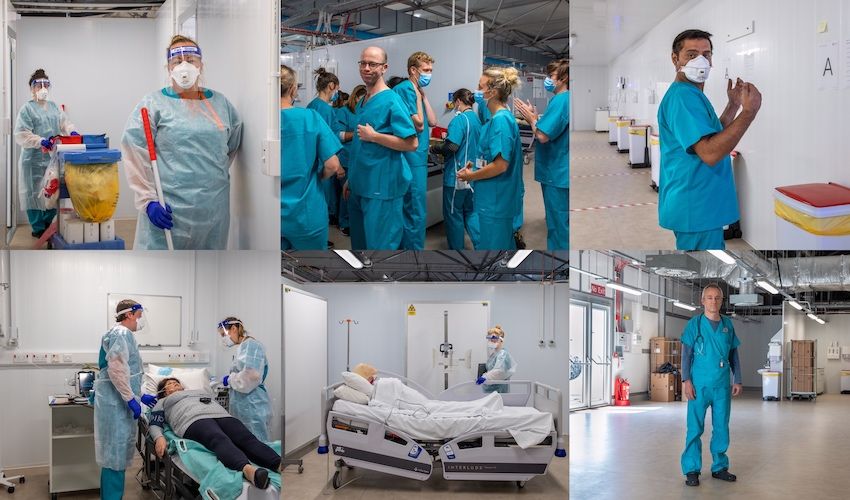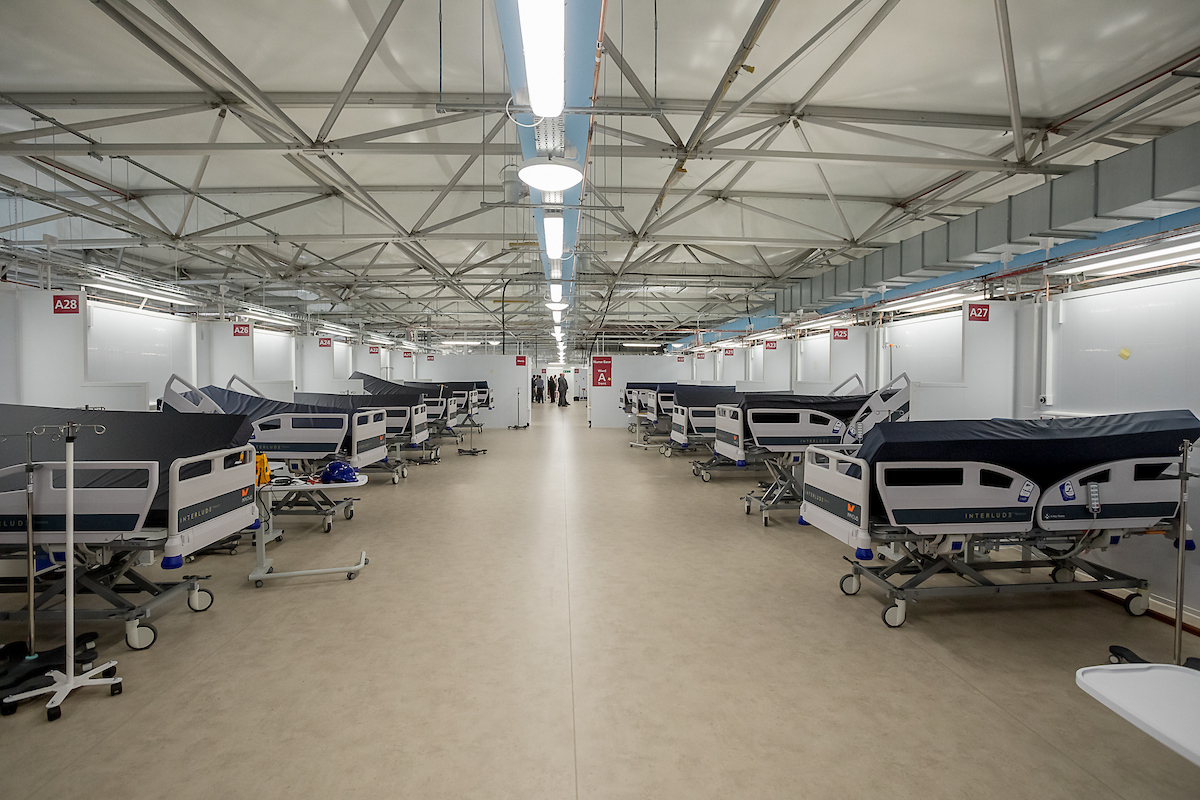


A local photographer spent five weeks at the Nightingale Hospital capturing the faces of those involved in building it, as well as the healthcare workers, cleaners and volunteers who helped get it ready for service.
Martin Toft, who teaches Photography at Hautlieu School, lives in St. Lawrence, not far from Milbrook Playing Field where the temporary field hospital has been built.
Born in Denmark, Martin’s photographs are known for combining a documentary and fine art approach to explore social, anthropological and cultural themes.
His latest project, ‘Field Hospital’, focused on the Nightingale Hospital which was built in response to the corona virus outbreak, something which Martin says will be “significant in Jersey’s living memory”.
“This event may turn out to be as decisive as the German Occupation in 1940-45,” he added.

Pictured: The Nightingale Hospital was built to provide an additional 180 beds.
Martin spent five weeks visiting the site at Millbrook, but rather than focusing on the building itself, he captured the people involved in the process, from official visits by politicians, civil servants, project managers and trade professionals to the many men and women of health professionals, volunteers and cleaners who prepared the field hospital for operational service.
The project is divided into two halves: Care & Construction and following completion of the hospital, Martin will share a set of images with the Société Jersiaise Photographic Archive whose ‘ Island Lockdown’ collection aims to document lockdown for future generations.
“The Nightingale Wing is now on standby awaiting its first patients of Covid-19 after 36 hours of assimilation where staff and volunteers acted out a number of clinical scenarios as a means to train its personnel and monitor how the field hospital itself would cope in a perceived spike of new cases emerging as the current island lockdown is slowly being lifted,” Martin explained.
“This sense of theatre and play is essential to the very nature of photography which from its very outset in early 19th century was imbued with a degree of artifice.”
During lockdown, Martin also worked on a separate project, titled ‘The Graveyard’. Martin explained that he lives next to St. Lawrence parish church and its graveyard and that his bedroom window overlooks the burial ground. In addition, his bedroom used to be a carpenter’s workshop where coffins were made.
“The names of some of the deceased are still inscribed in chalk on the beams in the ceiling, which at night glows likes ghosts,” he said.
This prompted a series of photographs taken around Martin’s house in response to the immediate environment and community.
“For many the experience of coronavirus pandemic has been one of dealing with death, both real and imagined,” the artist explained. “The images here are all made in the vicinity and acts as metaphor for our contemplation of mortality at a time when real death is literally starring us in the face.”
Comments
Comments on this story express the views of the commentator only, not Bailiwick Publishing. We are unable to guarantee the accuracy of any of those comments.